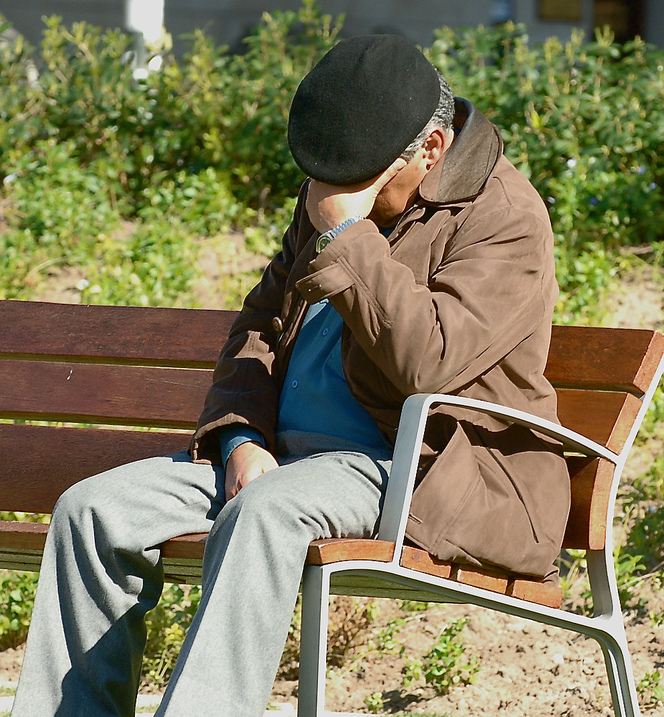Caregiver Stress
Managing Caregiver Stress
For people caring for a loved one, stress can be overwhelming to the point of debilitation.
Read this information to learn:
- * Who a caregiver is
- * What caregiver stress is
- * How to know if you have caregiver stress
- * How you can help manage caregiver stress
- * Who to call if you need help
Who is a Caregiver?
A caregiver is anyone who gives care and help to someone else. A caregiver may support a spouse, parent, sibling. Child or another family member or friend. A caregiver may be giving support to someone else because of health conditions, age, disability or injury.
Caregiving can include many different types of activities, such as:
- Cooking, cleaning, shopping and helping someone with their household chores/needs
- Helping someone with their day-to-day needs, such as dressing and bathing
- Driving or going with someone to health care appointments
- Helping someone who needs you in many other ways
You may not see yourself as a caregiver… but if you are giving care and assistance to someone else, it is important to recognize the caregiving work you do.
I’m caring for a loved one. Is it normal for me to feel stressed? Yes it is normal
This stress is called caregiver stress. Sometimes caregivers can feel more stress than the person being cared for. You may be so busy caring for your loved one that you forget to care for yourself. This can be tiring and stressful.
You may not want to take time away from your loved to deal with your own challenges… leading to more stress. Overwhelming levels of stress can affect your loved one too. They start to see and feel your stress as well. To help your loved one, you need to take care of yourself.
How can I tell if I have caregiver stress?
Sometimes, it’s hard to tell how stressed you feel.
Ask yourself if you are feeling these ways:
- I can’t get enough rest
- I don’t have time for myself
- I don’t have time to deal with other family members
- I feel guilty about my situation
- I don’t do other things anymore, beyond taking care of my loved one
- I have arguments with the person I care for
- I have arguments with other family members
- I cry often about the situation I’m in
- I worry about finances
- I don’t know the best way to care for my loved one
- I feel my health is declining
If you usually or always feel these ways, you may have caregiver stress.
What are the different kinds of caregiver stress?
You might have one or more of these kinds of stress:
Physical:
Taking care of a loved one can be tiring. You may not have time to eat well and exercise. This can affect your own health. Helping your loved one move around or move from bed to chair can also be hard on your own body.
Financial:
It can be expensive to provide care to your loved one. Trying to manage all these costs can cause stress.
Environmental:
You may have gone through many changes to help care for your loved one. How you spend your day or where you live may have changed. These kinds of changes can cause stress.
Social:
You may be spending so much time with your loved that you don’t have for other family members and friends. Not having family and friends around for support can be stressful.
Emotional:
Different kinds of caregiver stress can cause to feel:
- Helpless
- Depressed
- Lonely
- Self-doubt
- Embarrassed
- Frustrated
- Afraid
Sometimes, you may also start to feel angry or resentful towards the person you’re caring for. These feelings are completely normal, and they can cause you to feel guilt and stress. Knowing the kinds of stress you feel can help you make the right kinds of changes.
What can I do to reduce caregiver stress?
Here is a list of things you can do to help reduce the stress you may be feeling:
Take care of your physical needs
- Make sure you east at least 3 healthy meals a day.
- Try to exercise for at least 2 or more hours each week. Even a brisk walk can make a difference on how you feel.
- Try to get at least 7 or 8 hours of sleep each night.
- Make sure you keep your medical and dental appointments.
- Talk to your family doctor or another care provider for help if you are having physical symptoms of stress.
Look into financial and work place support
- Speak to your employer to let them know you may need to go to more appointments than usual. It may help let them know what is happening in your life. Also find out if your employer has any family caregiver benefits or flexibility, such as a caregiver time-off program.
- Financial help may be available. Talk to your social worker about programs through the government or other agencies that can help you manage all the costs. (See bottom of article for some links)
Daily living
- Try to get help with some of your daily chores/routines.
- Be realistic about what you can and cannot do. Don’t try to everything – no one can do it all.
- Ask for help when you need it and accept help if others offer. Even small things, like someone offering to shovel the walk or pick up groceries, can make a big difference in your day.
Stay connected with others
- Talk with others who have had similar experiences, like a friend or a neighbour. Knowing you are not alone can help you feel better. You can also try a support group. This is a group of people in a similar situation who meet regularly to share their experiences. There are also online discussion groups or other ways to connect with people if you can’t easily go somewhere outside your home.
- Talk to you friends and family regularly, and share your feelings with them.
- If you’re a member of s cultural or religious community, find out if any programs or support is available through these groups.
Accept your emotions
- Don’t be too hard on yourself. Accept how you’re feeling
- If you can’t find the time to do things that you need or want to do while your one needs care or company, consider respite care. Respite care, which is short term relief for caregivers, is available to give caregivers some time away to rest or attend to other issues. For more information on respite care (see below).
Where can I get more help if I need it?
Below are some general, Toronto based links… they can redirect your enquiry to your own region.
Family Services Toronto: 416-595-9618
www.familyservicetoronto.org
Family services offer workshops on senior and caregiver support services, and also has counselling services, a caregiver support group and mindfulness seminars to help caregivers adjust to their new role.
Caregiver Connect:
http://www.von.ca/caregiver-guide/default.aspx
A valuable source for caregiver information and support services. Visit the website and click on “Locations” to find contact numbers, programs and services available in your area
Respite Services:
www.thehealthline.ca
Respite care gives short term, temporary relief to caregivers. It can range from a few hours to a few weeks. There may be a charge for respite care. To find respite programs and contact numbers in your area, enter your postal code on the website shared. Select people with disabilities.
Community Care Access Centre (CCAC)
www.healthcareathome.ca 310-2222 (no area code required)
CCAC connects people and caregivers with health services and resources to support them at home and in their community. CCAC may also offer respite care. To find the nearest branch, use this website and enter your postal code and click on the map.
Telehealth Ontario:
1-866-797-0000 (TTY 1-866-797-0007)
Telehealth Ontario is staffed by registered nurses who can provide non-emergency advice or information. This service is open 24 hours a day. It’s confidential and is available in many languages. You do not need a health card to call.
Social Assistance in Canada http://www.servicecanada.gc.ca/rng/lifeevents/caregiver.shtml
This link will help you find information on various forms of assistance such as the compassionate care benefit or the caregiver tax credit.
Canada Revenue Agency, Tax Credits and Deductions for Persons with Disabilities www.cra-arc.gc.ca/familycaregiver/
Use this website to see if you qualify for the Family Caregiver Tax Credit


 Adult Incontinence is a normal part of the Aging? – Who ever said that. Get the Facts!
Adult Incontinence is a normal part of the Aging? – Who ever said that. Get the Facts!